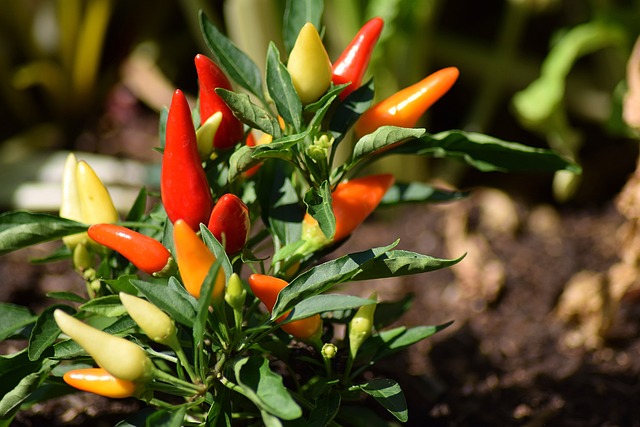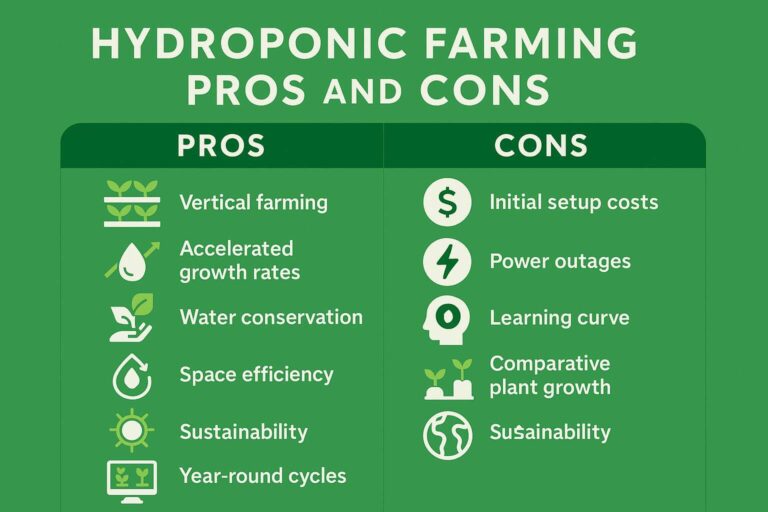When the temperatures start to drop, and winter approaches, gardeners and chili enthusiasts often find themselves facing a dilemma: what to do with their beloved chili plants. Can these heat-loving plants survive the cold, frosty conditions of winter?
The answer is not a simple yes or no; it depends on various factors, including the chili plant variety, your location, and the care you provide.
In this comprehensive guide, we’ll explore the ins and outs of overwintering chili plants, including the strategies you can use to help them survive and thrive during the colder months.
Understanding Chili Plants
Before we delve into the intricacies of overwintering chili plants, let’s first understand the basics of these fiery gems. Chili plants, scientifically known as Capsicum spp., belong to the Solanaceae family, which includes other well-known members like tomatoes and potatoes. They are native to Central and South America, where the climate is warm and tropical. In their natural habitat, chili plants thrive in temperatures ranging from 70°F to 90°F (21°C to 32°C), making them warm-season crops.
Chili plants are known for their pungent fruits, which vary in size, shape, color, and heat level. These fiery peppers contain a compound called capsaicin, responsible for their characteristic spiciness. Many chili enthusiasts grow these plants not only for culinary purposes but also as ornamental additions to their gardens. The vibrant colors of chili peppers, ranging from green to red, yellow, purple, and even black, make them visually appealing.
Chili Plants and Winter
Chili plants are not naturally adapted to cold and frosty conditions. In fact, they are quite sensitive to low temperatures. When exposed to cold weather, chili plants can suffer from various issues that may lead to their demise. Here are some of the challenges chili plants face during winter:
1. Frost Damage
One of the most significant threats to chili plants during winter is frost. When temperatures drop below freezing (32°F or 0°C), the water inside plant cells freezes and expands, causing cell damage. This damage can lead to wilting, blackened leaves, and even death if severe.
2. Reduced Growth
Chili plants are slow growers in cold temperatures. When the mercury drops, their growth rate slows down significantly. This reduced growth can lead to stunted plants with fewer fruits.
3. Disease Susceptibility
Cold and damp conditions can create an ideal environment for various diseases, including root rot and fungal infections. Chili plants weakened by cold stress are more susceptible to these issues.
4. Nutrient Uptake
Low temperatures can hinder a chili plant’s ability to take up essential nutrients from the soil, which can result in nutrient deficiencies and poor growth.
Given these challenges, you might wonder whether it’s even worth trying to overwinter chili plants. The good news is that with proper care and some strategic planning, you can help your chili plants survive the winter and even thrive once spring arrives.
Varieties of Chili Plants and Their Cold Tolerance
Not all chili plants are created equal when it comes to cold tolerance. Some varieties are more robust and better equipped to withstand chilly conditions than others. Understanding the cold tolerance of your specific chili plant variety is crucial in determining your overwintering strategy. Here are a few chili plant varieties categorized by their cold tolerance:
1. Cold-Hardy Varieties
- Aji Amarillo: This Peruvian chili is known for its bright yellow, wrinkled peppers. It can handle cooler temperatures better than many other chili varieties.
- Numex Twilight: These small, colorful chilies are bred to withstand colder climates and are often used as ornamental plants.
- Fish Pepper: Originating from the Caribbean, fish peppers are known for their variegated foliage and adaptability to cooler conditions.
2. Moderate Cold Tolerance
- Jalapeño: While not as cold-hardy as some other varieties, jalapeños can survive mild winter conditions with protection.
- Cayenne: Cayenne peppers are moderately cold-tolerant and can tolerate brief exposure to frost.
- Tabasco: Tabasco peppers can handle cooler temperatures, but they still require protection in most winter climates.
3. Warm-Season Varieties
- Habanero: Habanero peppers are known for their intense heat and are less tolerant of cold conditions.
- Ghost Pepper (Bhut Jolokia): Ghost peppers are extremely hot and not well-suited for cold climates.
- Scotch Bonnet: These peppers, popular in Caribbean cuisine, prefer tropical conditions and are not cold-tolerant.
Before you decide to overwinter your chili plants, identify the variety you’re dealing with and assess your local climate. Understanding your chili plant’s specific needs is crucial for successful overwintering.
Overwintering Chili Plants: Strategies for Success
Now that you’ve assessed your chili plant’s cold tolerance and your local climate, it’s time to explore strategies to help your chili plants survive the winter. Here are some effective methods to consider:
1. Bring Them Indoors
- One of the most foolproof methods to protect your chili plants from winter’s chill is to bring them indoors. As the temperatures drop in the fall, carefully uproot your chili plant, pot it in a container, and place it in a sunny spot indoors. A south-facing window with plenty of sunlight is ideal.
- Before bringing your chili plant indoors, inspect it for pests and diseases. You don’t want to introduce unwanted guests to your indoor garden. Trim any dead or unhealthy foliage and prune the plant as needed to encourage healthy growth.
- Provide adequate humidity by placing a tray of water near the plant or using a humidifier, as indoor air can be dry during the winter months. Additionally, ensure proper ventilation to prevent fungal issues.
- Keep the indoor temperature between 65°F to 75°F (18°C to 24°C) during the day and slightly cooler at night. This temperature range mimics the chili plant’s preferred growing conditions.
- Water your indoor chili plants sparingly during the winter, as they require less moisture in cooler temperatures. Allow the soil to dry slightly between watering.
- You can also use grow lights to supplement natural sunlight if you have limited access to sunlight indoors.
2. Mulch and Protect Outdoor Plants
- If bringing your chili plants indoors isn’t feasible, you can take steps to protect them while they remain outdoors.
- Apply a thick layer of mulch around the base of the plant to insulate the roots and maintain soil temperature. Straw, leaves, or wood chips make excellent mulching materials.
- Install row covers or cloches to shield your chili plants from frost and cold winds. Be sure to remove them during the day to allow sunlight and air circulation.
- Water your outdoor chili plants sparingly during winter. Overwatering can lead to root rot in cold, damp conditions. Water the soil rather than the foliage to prevent freezing.
3. Prune and Trim:
- Before winter sets in, prune your chili plants to remove dead or unhealthy growth. This not only improves the plant’s overall health but also reduces the risk of disease during winter.
- Remove any remaining chili peppers, as they are unlikely to ripen in cold weather and can divert energy away from the plant’s survival efforts.
- You can also trim back the plant’s top growth to encourage bushier growth and reduce its overall size, making it easier to manage indoors if you choose to bring it inside.
4. Container Gardening
- If you’re growing chili plants in containers, you have more flexibility in moving them to sheltered locations during the winter.
- Place your potted chili plants in a protected area, such as a garage, shed, or covered porch, when temperatures drop significantly. Ensure they receive adequate sunlight during this time.
- Consider insulating the pots with bubble wrap or blankets to prevent the roots from freezing.
5. Greenhouse or Cold Frame
- If you have access to a greenhouse or a cold frame, you can maintain a more controlled environment for your chili plants during winter.
- Bring your chili plants into the greenhouse or cold frame before the first frost. Ensure proper ventilation and humidity control.
- Monitor the temperature inside the greenhouse and provide supplemental heating if necessary to keep it within the preferred range for chili plants.
- You can continue to grow chili plants in the greenhouse throughout the winter, allowing them to produce peppers even in the coldest months.
Common Problems and Troubleshooting
While overwintering chili plants, you may encounter some common issues. Here are some troubleshooting tips to address these problems:
1. Pests
- Check your indoor chili plants regularly for pests like aphids, spider mites, or whiteflies. If you notice any infestations, use appropriate insecticidal soap or neem oil to eliminate them.
- Quarantine any newly acquired plants before placing them near your overwintered chili plants to prevent introducing pests.
2. Disease
- Maintain good air circulation around your indoor plants to prevent fungal issues. Ensure the room is not too humid, as excessive moisture can encourage mold and mildew.
- Avoid splashing water on the foliage when watering, as wet leaves are more susceptible to disease.
3. Overwatering
- Overwatering is a common mistake during the winter months. Make sure the soil dries out slightly between waterings to prevent root rot.
- Use well-draining soil and pots with drainage holes to facilitate proper water management.
Spring Awakening
As winter transitions into spring and temperatures start to rise, your overwintered chili plants will begin to wake up from their dormancy. Here’s what you can do to ensure a successful transition:
1. Gradual Reintroduction to Outdoor Conditions
- Before moving your chili plants back outdoors, gradually acclimate them to the outdoor environment. Start by placing them in a sheltered spot for a few hours a day, gradually increasing the time they spend outside.
- This process, known as hardening off, helps your plants adjust to the outdoor conditions and prevents shock.
2. Repot and Prune
- If your chili plants have outgrown their pots or suffered any winter damage, consider repotting them into larger containers with fresh potting soil.
- Prune away any remaining dead or damaged growth to encourage new, healthy growth.
3. Fertilize
- Once your chili plants are settled back into the outdoor garden, you can start fertilizing them with a balanced, slow-release fertilizer to support their growth and fruit production.
4. Regular Maintenance
- Continue to monitor your chili plants for pests and diseases as they transition back outdoors. Early detection and intervention are key to preventing infestations and outbreaks.
- Water your plants consistently, but adjust the frequency based on your local climate and weather conditions.
Conclusion
Overwintering chili plants can be a rewarding experience for gardeners and chili enthusiasts who want to enjoy their favorite pepper varieties year-round. While chili plants are sensitive to cold and frost, with the right care and attention, you can help them survive and thrive through the winter months. Whether you choose to bring them indoors, protect them outdoors, or use a combination of strategies, understanding your chili plant’s specific needs is essential for a successful overwintering process.
Remember that each chili plant variety has its own cold tolerance level, so tailor your approach accordingly. With patience and dedication, you can ensure your chili plants not only survive winter but also flourish once spring arrives, providing you with a bountiful harvest of spicy delights for your culinary adventures. So, embrace the challenge of overwintering chili plants and enjoy the fiery rewards that come with it.




